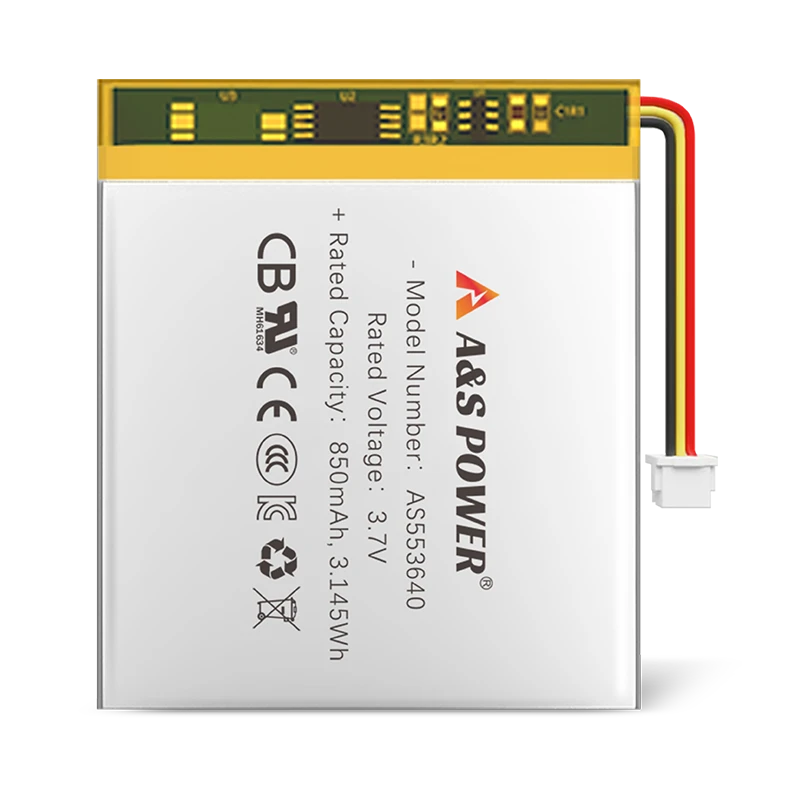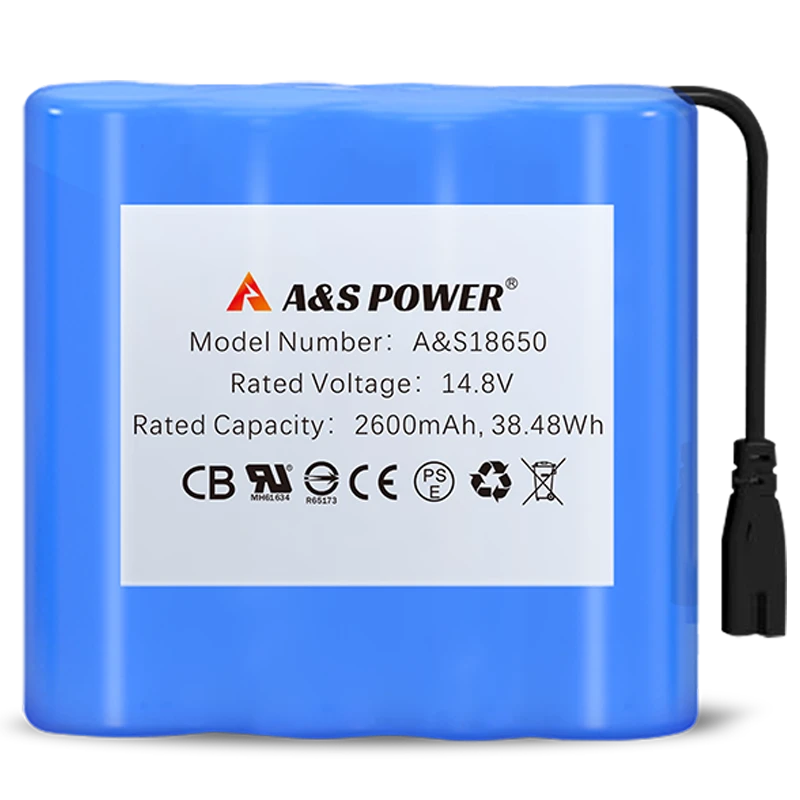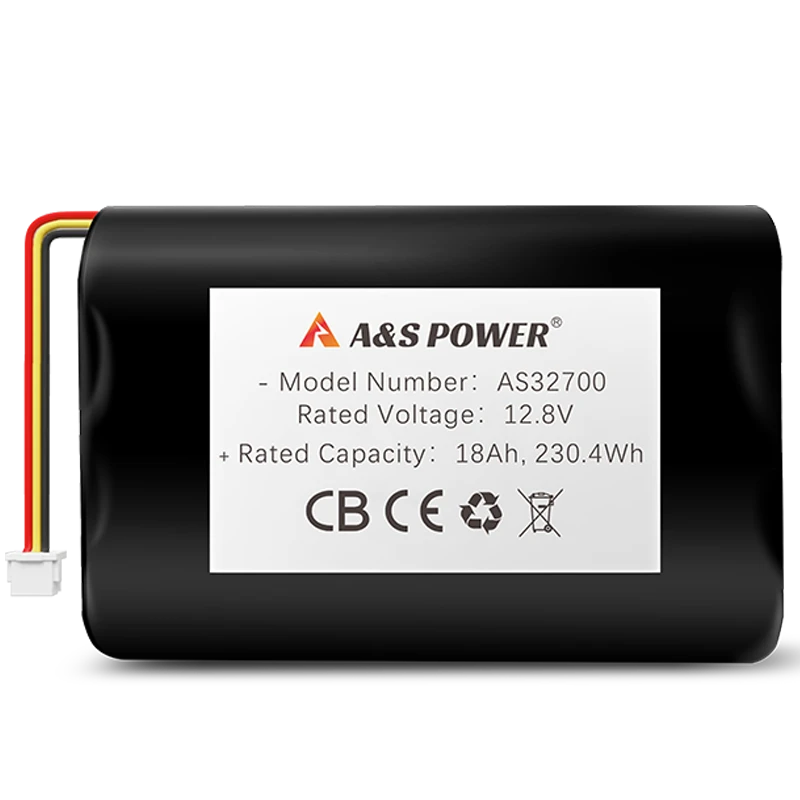Proper use of lithium batteries
Proper Use of Lithium Batteries
Introduction to Lithium Battery Technology and Best Practices
The global market for lithium batteries continues to expand at an unprecedented rate, driven by increasing demand across various sectors including electric vehicles, renewable energy storage systems, and portable electronic devices, making it absolutely essential for businesses and consumers alike to understand the proper use and handling of these sophisticated energy storage devices. As a leading manufacturer and wholesaler of lithium batteries operating in the international marketplace, we recognize the critical importance of providing comprehensive guidance on the correct utilization of these powerful yet sensitive components, which when mishandled can lead to reduced efficiency, premature failure, or even hazardous situations. Proper use encompasses a wide range of practices, from the initial selection of the appropriate battery chemistry for a specific application to the implementation of correct charging protocols, optimal storage conditions, and diligent maintenance routines, all of which collectively contribute to maximizing the return on investment and ensuring reliable operation throughout the battery's intended lifespan. This document aims to synthesize the most current and authoritative information available from leading global sources, providing a detailed, evidence-based overview of the best practices that should be adopted by anyone integrating lithium batteries into their products or systems.
Understanding Battery Chemistry and Specifications
The fundamental characteristics of lithium-based cells, including their specific energy density, voltage profiles, thermal stability, and cycle life expectations, form the cornerstone of proper usage as these parameters dictate the boundaries within which the battery can be operated safely and effectively. Different chemistries such as Lithium Iron Phosphate (LFP), Lithium Nickel Manganese Cobalt Oxide (NMC), and Lithium Cobalt Oxide (LCO) each possess unique attributes that make them more or less suitable for particular applications, with LFP being renowned for its exceptional thermal and chemical stability making it ideal for large-scale energy storage, while NMC offers higher energy density preferred in the automotive industry. Consequently, the first and most crucial step in the proper use of lithium batteries is the meticulous selection of the correct chemistry and form factor based on the specific requirements of the intended application, considering factors such as required capacity, power output, operational environment, and safety regulations. Furthermore, beyond mere selection, proper use mandates a deep comprehension of the battery's operational limits, including its safe operating area defined by voltage, current, and temperature thresholds, which must be rigorously respected through the implementation of a robust Battery Management System (BMS) that continuously monitors and protects each cell within a pack.
Importance of Manufacturer Guidelines and Documentation
Comprehensive documentation provided by reputable manufacturers serves as the primary source of truth for appropriate usage parameters, containing meticulously tested specifications regarding charging voltages, temperature ranges, discharge rates, and storage conditions that have been validated through extensive laboratory testing and quality assurance processes. These guidelines incorporate crucial safety margins and derating factors that account for real-world operating conditions, providing users with a reliable framework within which they can expect optimal performance without compromising the structural integrity or electrochemical stability of the battery cells. International standards organizations including the International Electrotechnical Commission (IEC) and Underwriters Laboratories (UL) have established rigorous testing protocols and certification requirements that manufacturers must meet, ensuring that published specifications accurately reflect the safe operating envelope for each battery product. Users should therefore always prioritize manufacturer recommendations over general advice found online, as subtle differences in electrode composition, separator materials, and electrolyte formulations can significantly influence the optimal operating conditions for specific battery models.
Optimal Charging Procedures for Maximum Lifespan and Safety
The charging process represents one of the most critical aspects influencing the health, performance, and safety of a lithium battery, requiring strict adherence to manufacturer-specified protocols to prevent detrimental effects such as lithium plating, accelerated degradation, and in extreme cases, thermal runaway events that can have catastrophic consequences. Unlike older battery technologies like lead-acid, lithium batteries require a sophisticated constant-current (CC) followed by constant-voltage (CV) charging algorithm, where the current is first held steady until the cell voltage reaches its maximum recommended level—typically around 4.2V for most NMC and LCO cells or 3.65V for LFP cells—after which the voltage is maintained constant while the current naturally tapers down as the cell approaches full charge. It is absolutely imperative to utilize a dedicated, high-quality charger specifically designed for the particular lithium chemistry in use, as an incompatible charger can easily apply incorrect voltage thresholds or excessive current, leading to overcharging, a condition that forces excess lithium ions into the anode, causing oxidative damage to the cathode, electrolyte decomposition, and gas generation that swells the cell and compromises its structural integrity. Moreover, allowing a lithium battery to remain at a 100% state of charge (SOC) for prolonged periods, particularly in elevated temperature environments, places significant stress on the electrodes and accelerates parasitic side reactions that permanently reduce capacity, which is why for applications involving long-term storage, it is widely recommended to maintain the battery at a partial state of charge, ideally between 40% and 60%.
Temperature Management During Charging Cycles
The thermal conditions under which lithium batteries are charged significantly impact both their immediate performance and long-term degradation, with most manufacturers specifying an optimal temperature range between 10°C and 45°C (50°F to 113°F) for charging operations to proceed safely and efficiently. Charging outside this temperature range can lead to various problematic phenomena, including lithium plating on the anode surface when charging below 0°C (32°F), where lithium ions form metallic deposits instead of properly intercalating into the graphite structure, permanently reducing capacity and creating potential safety hazards through dendrite formation that can penetrate separators. Conversely, charging at elevated temperatures above 45°C (113°F) accelerates electrolyte decomposition and growth of the solid electrolyte interphase (SEI) layer, which consumes active lithium ions and increases internal resistance, ultimately diminishing the battery's ability to deliver power and reducing its overall cycle life. Advanced battery management systems incorporate temperature sensors that either adjust charging parameters to compensate for thermal conditions or temporarily suspend charging altogether when temperatures fall outside the safe operating window, providing crucial protection against temperature-related degradation mechanisms.
Optimal Charging Rates and Their Impact on Longevity
The rate at which energy is delivered to a lithium battery during charging, typically expressed as a C-rate where 1C represents the current required to fully charge the battery in one hour, significantly influences both the charging time and the long-term health of the battery cells. While modern lithium batteries can often accept charge rates of 1C or higher, resulting in dramatically reduced charging times, these accelerated charging protocols invariably come at the cost of increased internal stress, elevated temperatures, and accelerated degradation of electrode materials, ultimately reducing the total number of charge-discharge cycles the battery can endure before reaching end-of-life capacity thresholds. Most manufacturers recommend standard charging at rates between 0.5C and 0.7C for optimal balance between charging speed and longevity, with fast charging at 1C or above reserved for situations where convenience outweighs the impact on battery lifespan. The following table illustrates the typical relationship between charging rate and cycle life expectancy for commercial lithium-ion batteries:
| Charging Rate | Estimated Cycle Life | Capacity Retention After 500 Cycles |
|---|---|---|
| 0.5C | 1200-1500 cycles | 85-90% |
| 1.0C | 800-1000 cycles | 80-85% |
| 2.0C | 500-700 cycles | 75-80% |
| 3.0C | 300-500 cycles | 70-75% |
Discharge Characteristics and Depth of Discharge Management
The manner in which energy is extracted from lithium batteries during discharge significantly impacts their performance, longevity, and safety, requiring careful management of discharge rates, depth of discharge, and temperature conditions to ensure optimal operation throughout the product lifecycle. Unlike some other battery chemistries, lithium batteries do not suffer from the "memory effect" that requires periodic full discharge cycles to maintain capacity, but they are instead sensitive to extreme discharge conditions that can cause irreversible damage to their internal structure and electrochemical components. The depth of discharge (DOD)—the percentage of capacity withdrawn from the battery relative to its maximum capacity—has a profound nonlinear relationship with cycle life, with shallower discharges consistently resulting in dramatically higher numbers of available cycles before the capacity degrades to 80% of its original value, which is typically considered the end of useful life for most applications. For instance, a lithium battery cycled to 100% DOD might only endure 500-800 cycles, while the same battery cycled to only 50% DOD could achieve 1,200-1,500 cycles or more, effectively doubling or tripling its operational lifespan and providing significantly better long-term value, particularly for large-scale installations like grid storage systems or electric vehicle fleets.
Voltage Thresholds and Low-Voltage Protection
Monitoring voltage during discharge provides crucial information about the battery's state of charge and helps prevent over-discharge, a condition that can cause irreversible damage to lithium cells by driving the voltage below critical thresholds where undesirable chemical reactions begin to occur. Most lithium battery chemistries should not be discharged below approximately 2.5V to 3.0V per cell, depending on the specific chemistry, as voltages below this range can lead to copper dissolution from the current collector, breakdown of electrode materials, and other degenerative processes that permanently reduce capacity and create potential safety hazards. Modern battery management systems incorporate low-voltage disconnect circuits that automatically isolate the battery from the load when the voltage approaches these critical thresholds, providing essential protection against over-discharge damage, particularly in applications where the battery might be forgotten in a discharged state for extended periods. For multi-cell batteries, ensuring balanced discharge across all cells is equally important, as weaker cells will discharge more quickly than their stronger counterparts, potentially reaching critical low-voltage conditions even while the overall battery voltage appears acceptable, highlighting the importance of cell-level monitoring in series configurations.
Maximum Discharge Rates and Power Capabilities
The maximum continuous and pulse discharge rates specified by manufacturers represent important boundaries that should not be exceeded during normal operation, as excessive current draw generates substantial internal heat through I²R losses, potentially leading to thermal runaway conditions in extreme cases. While lithium batteries are capable of delivering very high pulse currents—often 3-5 times their continuous rating for short durations—sustained high-rate discharge accelerates degradation mechanisms including particle cracking in electrode materials, accelerated growth of the solid electrolyte interphase layer, and mechanical stress from rapid lithium insertion and extraction. Applications requiring high power output should therefore be designed with adequate thermal management systems, including heat sinks, thermal interface materials, and possibly active cooling solutions, to maintain cell temperatures within safe operating limits during high-rate discharge events. Additionally, the usable capacity of a lithium battery decreases at higher discharge rates due to increased voltage sag under load and higher internal losses, meaning that a battery might deliver only 80-90% of its rated capacity when discharged at its maximum continuous rate compared to what it would deliver at a more moderate 0.2C rate.
Environmental Considerations and Storage Protocols
The environmental conditions under which lithium batteries are operated and stored significantly influence their performance, safety, and degradation rate, requiring careful attention to temperature, humidity, mechanical stress, and atmospheric conditions to ensure optimal results throughout their service life. Temperature represents the most critical environmental factor, with both extreme heat and cold causing various problematic phenomena including accelerated chemical degradation, increased internal resistance, lithium plating, and in worst-case scenarios, thermal runaway events that can lead to fire or explosion. The ideal operating temperature for most lithium batteries falls between 15°C and 35°C (59°F to 95°F), with performance degradation becoming increasingly pronounced outside this range—low temperatures increase internal resistance and reduce available capacity while high temperatures accelerate parasitic side reactions that permanently reduce capacity and increase internal resistance over time. For applications involving operation at temperature extremes, special battery formulations with optimized electrolytes and electrode materials may be necessary, though these typically come with trade-offs in terms of energy density or cost, highlighting the importance of selecting the appropriate battery chemistry for the expected operating environment.
Long-Term Storage Considerations and Procedures
Proper storage procedures are essential for maintaining battery health during periods of inactivity, whether between manufacturing and installation or during seasonal downtime for certain applications, with specific protocols required to minimize capacity loss and prevent irreversible damage during extended storage. The two most critical factors for long-term storage are state of charge and temperature, with most manufacturers recommending storage at approximately 40-60% state of charge in a cool, dry environment maintained between 10°C and 25°C (50°F to 77°F) for optimal preservation of capacity and cycle life. Storing batteries at full charge accelerates degradation mechanisms including electrolyte oxidation and growth of the solid electrolyte interphase layer, while storing completely discharged batteries risks allowing cell voltages to drop below critical thresholds where copper dissolution and other irreversible damage can occur. The following table illustrates the typical annual capacity loss for lithium batteries under various storage conditions, demonstrating the significant impact of both temperature and state of charge on calendar aging:
| Storage Temperature | 100% State of Charge | 50% State of Charge | 20% State of Charge |
|---|---|---|---|
| 0°C (32°F) | 2% per year | 1% per year | 1% per year |
| 25°C (77°F) | 20% per year | 4% per year | 3% per year |
| 40°C (104°F) | 35% per year | 15% per year | 12% per year |
| 60°C (140°F) | 50% per year | 30% per year | 25% per year |
Humidity, Mechanical, and Atmospheric Considerations
Beyond temperature and state of charge, several other environmental factors require consideration for proper lithium battery usage, including humidity levels, mechanical vibration and shock, and atmospheric composition, all of which can influence performance and safety in specific applications. High humidity environments can lead to corrosion of electrical contacts and potentially allow moisture ingress into battery packs, particularly if seals are compromised, potentially leading to short circuits or other hazardous conditions. Mechanical vibration and shock can damage internal connections, compromise safety devices, or in extreme cases cause internal short circuits through physical damage to separators or electrode materials, making proper mechanical mounting and shock absorption particularly important in automotive, aerospace, and industrial applications. For batteries operating in unusual atmospheric conditions—such as high altitude with reduced atmospheric pressure or environments with specific chemical vapors—additional protective measures may be necessary to ensure reliable operation and prevent unexpected failure modes, highlighting the importance of understanding the complete operational environment when designing battery systems.
Maintenance, Monitoring, and End-of-Life Considerations
Proper maintenance and monitoring practices are essential for maximizing the performance and lifespan of lithium battery systems, enabling early detection of potential issues, ensuring optimal operating conditions, and providing valuable data for predicting remaining useful life and planning for eventual replacement. Regular visual inspections should be conducted to check for physical damage, swelling, leakage, or corrosion on terminals, with any compromised batteries immediately removed from service and properly disposed of according to local regulations. Electrical performance monitoring should include tracking capacity retention, internal resistance, self-discharge rate, and cell balance in multi-cell configurations, with significant deviations from baseline performance potentially indicating emerging problems that require attention. For large installations, implementing a battery management system with data logging capabilities allows for trend analysis and predictive maintenance, potentially identifying issues before they lead to catastrophic failure or significant performance degradation, ultimately reducing downtime and total cost of ownership.
Performance Monitoring and Capacity Testing
Regular capacity testing provides the most accurate assessment of a lithium battery's health and remaining useful life, involving a controlled discharge from full charge to the cutoff voltage while measuring the total energy delivered, which can then be compared to the battery's original rated capacity. While frequent full discharge cycles for capacity testing are not recommended due to the associated stress on the battery, periodic testing—perhaps every 6-12 months for critical applications—provides valuable data for assessing degradation rate and predicting replacement timing. For applications where complete capacity testing is impractical, tracking operational parameters such as charge efficiency, voltage sag under load, and temperature rise during operation can provide indirect indicators of battery health, though these methods are generally less accurate than full capacity testing. Advanced battery management systems often incorporate algorithms that estimate state of health based on various parameters including cycle count, operating temperature history, and impedance measurements, providing continuous health monitoring without the need for disruptive capacity tests.
End-of-Life Considerations and Proper Disposal
As lithium batteries approach the end of their useful life, typically defined as when their capacity drops to 80% of the original rated capacity or when their internal resistance increases to a point where they can no longer deliver required power, proper procedures for retirement and disposal become increasingly important for both environmental and safety reasons. Most jurisdictions have specific regulations governing the disposal and recycling of lithium batteries due to their potential environmental impact and the valuable materials they contain, making compliance with these regulations essential for responsible operation. Many manufacturers and third-party organizations offer battery recycling services that recover valuable materials including lithium, cobalt, nickel, and copper, reducing the environmental impact of battery production and minimizing the need for virgin materials. For businesses operating large battery installations, developing a comprehensive end-of-life plan that includes recycling options, documentation requirements, and budget for replacement ensures smooth transition when batteries eventually reach the end of their service life, minimizing operational disruption and environmental impact.
Through adherence to these comprehensive guidelines for proper lithium battery use, businesses and consumers can maximize the performance, longevity, and safety of their energy storage systems while minimizing environmental impact and total cost of ownership. As battery technology continues to evolve, staying informed about best practices and manufacturer recommendations remains essential for achieving optimal results from these sophisticated electrochemical devices.
-

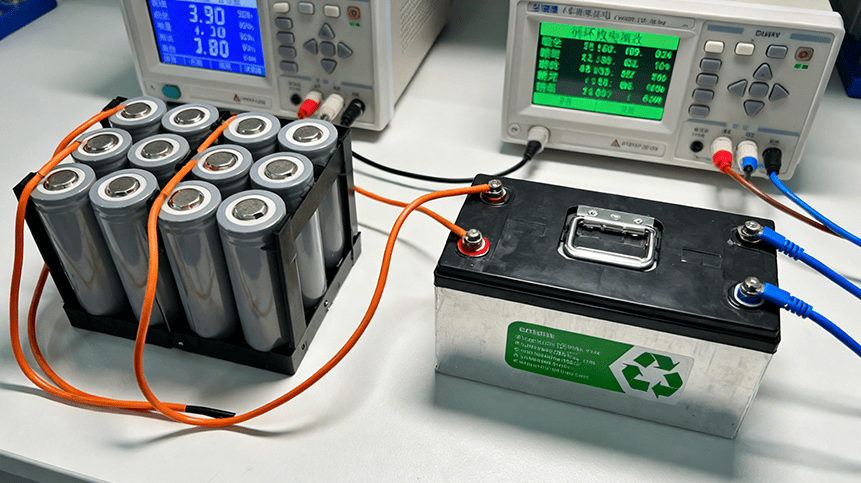 May.2025.11.24Ternary Lithium Battery vs Lithium-ion: Complete Comparison Guide (2025 Edition)Learn More
May.2025.11.24Ternary Lithium Battery vs Lithium-ion: Complete Comparison Guide (2025 Edition)Learn More -

 May.2025.11.214S2P 18650 14.8V Battery: Complete Technical Guide, Specs, Applications & SafetyLearn More
May.2025.11.214S2P 18650 14.8V Battery: Complete Technical Guide, Specs, Applications & SafetyLearn More -

 May.2025.11.18PCM vs BMS in Lithium Batteries: What’s the Difference and Which One Do You Need?Learn More
May.2025.11.18PCM vs BMS in Lithium Batteries: What’s the Difference and Which One Do You Need?Learn More -

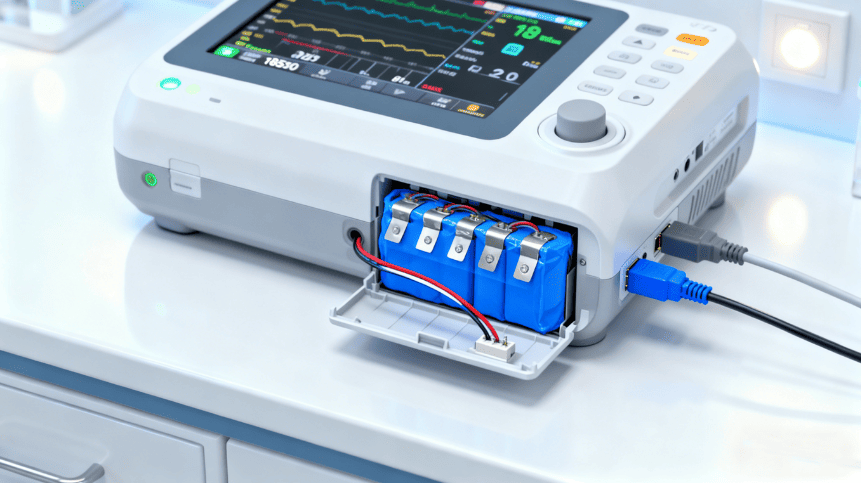 May.2025.11.17Custom Li-ion Battery Design for Medical Devices (2025 Comprehensive Guide)Learn More
May.2025.11.17Custom Li-ion Battery Design for Medical Devices (2025 Comprehensive Guide)Learn More -

 May.2025.11.17The Future of Lithium-Ion Batteries: Innovation, Sustainability, and Global Market TrendsLearn More
May.2025.11.17The Future of Lithium-Ion Batteries: Innovation, Sustainability, and Global Market TrendsLearn More




